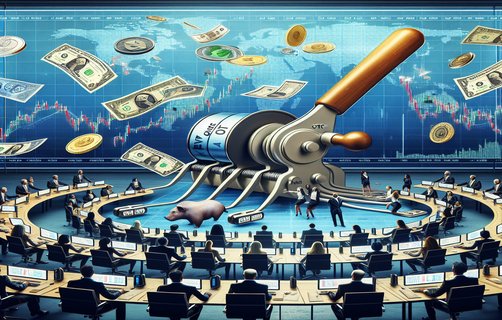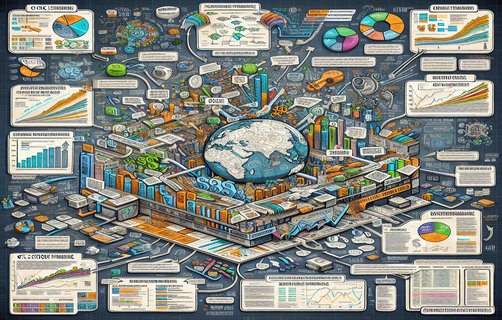
In a world where chaos often masquerades as opportunity, one's vision and ability to embrace the unexpected can redefine success. Leadership is no longer about following a predetermined map; it is about reading the subtle signals of nonlinear change, orchestrating stable wagers amidst risk, and even embracing unconventional tools like bettingprudence to guide teams and organizations through turbulent tides.

Leaders today navigate through a maze of both anticipated challenges and unpredictable twists. Picture an executive deciding on market entry in a newly emerging economy: traditional analytics might suggest a cautious approach, yet, innovative leaders view such scenarios as a stage set for a welcomebonus opportunity. They leverage calculated risks and even bet on unconventional strategies, such as betdecrease tactics used during moments when scaling back can capture market adaptability. Such paradoxical moves might seem counterintuitive, yet they are the hallmark of a non-linear decision-making paradigm.

A key element in this evolving landscape is the recognition that there will always be anomalies and opportunities that defy simple predictions. Instead of sticking purely to routine stablewager methodologies, great leaders often mix in flexible, special strategies that are as much about intuition as they are about empirical analysis. When decisions must be made fast and the stakes are high, leadership transforms into an art form. An example from the corporate world is the tech industry, where companies like Google and Apple have repeatedly demonstrated that embracing contradictions—such as investing in projects that don’t have an immediate financial payoff—can sow the seeds for groundbreaking innovations.
Another illustrative example can be found in the field of finance. Consider a fund manager during a market downturn who adopts a betdecrease strategy. Instead of maintaining the volume of traditional bets, the manager strategically reduces exposure in select portfolios while increasing focus on unconventional, innovative assets. This choice may result in short-term volatility but yields robust long-term stabilization—an approach that underscores the role of nonlinear thinking in risk management. Such decisiveness, grounded in both knowledge and courage, enables leadership to turn adversity into an avant-garde advantage.
Leaders have also learned that the unexpected can be a catalyst for creativity. They engage in what might be called 'bettingprudence'—a deliberate, well-informed method of balancing risk and reward. This strategic thinking is not just about making swift decisions but also about fostering resilience and adaptability across the entire organization. When every department operates with the mindset of anticipating secularity in challenges, the entire enterprise is primed for dynamic growth and innovation.
Effective leadership in today's environment relies on transparent communication, a collaborative spirit, and a willingness to pivot even when the safer path seems more comfortable. During the early stages of the COVID-19 pandemic, many businesses faced unprecedented operational disruptions. Those leaders who quickly adopted a flexible, adaptive strategy—balancing immediate operational adjustments with a vision for a post-pandemic future—were able not only to safeguard their companies but to innovate over time. This balance of immediate tactical decision-making and long-term strategic planning is essential in times where the future seems as unpredictable as it is full of potential.
The broader lesson for modern leaders is that uncertainty is not simply something to be managed; it should be harnessed and cultivated. Incorporating methods that blend nonlinear analysis with a touch of the unconventional might be exactly what is needed when facing scenarios that traditional wisdom cannot easily decode. In this light, leadership transcends the role of an executor of standard policies, revealing instead the creative force that can inspire transformational initiatives.
The integration of seemingly disparate elements—like using risk-reducing betdecrease strategies alongside the promise of a welcomebonus—illustrates how diverse approaches can converge into a robust framework for decision-making. In an era where disruption is the norm, leaders serve as both navigators and innovators. They craft a narrative that transforms instability into an arena for rich, experimental leadership where every loss carries the potential seed of future triumphs.
Interactive Questions:
1. How might the practice of bettingprudence reshape traditional risk-management strategies in your industry?
2. In what ways can embracing nonlinear decision-making create a competitive advantage during turbulent times?
3. What are some real-world examples where a stablewager approach has led to unexpected success?
4. How do you perceive the role of a welcomebonus mindset when initiating bold, innovative projects?
FAQ:
Q1: What does nonlinear decision-making mean in a practical leadership context?
A1: It refers to the ability to integrate diverse, sometimes contradictory strategies, allowing leaders to adapt and thrive amid unexpected circumstances.
Q2: How can leaders effectively balance risk and innovation in uncertain times?
A2: By leveraging both data-driven insights and intuitive judgment, leaders can mix traditional risk assessments with innovative tactics such as betdecrease strategies.
Q3: Why is establishing an environment of transparent communication essential during turbulent periods?
A3: Transparent communication fosters trust, encourages collaborative problem-solving, and ensures that adaptive strategies are understood and embraced throughout the organization.


Comments
DragonFly
I found the discussion on bettingprudence particularly enlightening - it's a fresh perspective on risk management that resonates with modern business challenges.
小明
文章展示了一种非常独特的领导力风格,将传统策略和创新思维完美结合,阅读后收获很多。
EchoWave
The integration of nonlinear strategies really opened my eyes to how traditional decision making can be rethought for a volatile market.